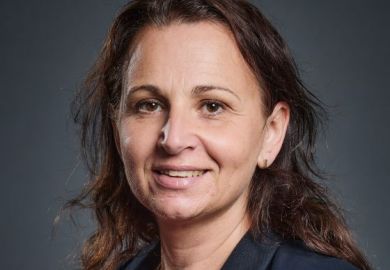The election of a new president by a flagship Paris university will not necessarily end ongoing turbulence within the experimental institution, experts have warned.
The crisis at Paris-Saclay University began in February as the institution struggled to establish a governing board, a prerequisite for the election of a new president. Camille Galap, a biologist with a long history of higher education leadership, was initially appointed provisional administrator in March when the mandate of the outgoing president, Estelle Iacona, expired.
Once the leadership contest began, neither Professor Iacona, who ran for a second term, nor her rival, Yves Bernard, could secure a majority, prompting the outgoing president to withdraw from the contest. After resigning as provisional administrator to stand as a candidate, Professor Galap ultimately defeated Professor Bernard and Souhil Megherbi, also a Paris-Saclay professor, to be elected president earlier this month.
Much of the tension within Paris-Saclay derives from the hybrid structure of the mega-university, which brought together 15 institutions and faculties upon its official creation as an “experimental public establishment” in 2020.
The “complex and ambitious project” must thus contend with “all the historical divisions in French higher education, between grandes écoles, research organisations and universities,” said Jean-Michel Catin, a blogger on French higher education. “Bringing all these components together and getting them to work together is a challenge in itself.”
“Very low” turnout at the beginning of the elections, Mr Catin added, suggested that members of the Paris-Saclay community found it “difficult to identify with this ‘experimental establishment’”.
The institutions that make up Paris-Saclay joined the project under different conditions: the grandes écoles maintain some independence, as do the constituent Université de Versailles Saint-Quentin-en-Yvelines and Université d’Évry Val d’Essonne; however, the former Paris-Sud University was fully absorbed into the new project. The Paris-Sud science faculty, Mr Catin said, “felt that its leadership had been taken away”.
“A part of the scientific community of the old Paris-Sud University don’t accept that professors of the grandes écoles have influence on the board decisions of Paris-Saclay, therefore indirectly on the activities of their laboratories or teaching department,” said Jean-Yves Mérindol, who led institutions including the University Sorbonne Paris-Cité, a former cluster of four universities and four grandes écoles, before his retirement.
Many of these discontented academics, Professor Mérindol said, hope to “recreate Paris-Sud University and restrict the action of Paris-Saclay University to a light coordination between Paris-Sud and the grandes écoles”.
Professor Iacona’s bid for re-election was hampered by friction with leading trade unions, Professor Mérindol said – an issue he anticipated Professor Galap would avoid. “He is not involved in the tensions between the former presidency and a part of the trade union organisations, which is an advantage,” he said.
As president, Professor Galap must navigate two crucial issues, Professor Mérindol said: Paris-Saclay’s transition from experimental public establishment to grand établissement status, and the creation of a “strategic plan” for the university’s future. Both tasks are complicated by external circumstances, he said, among them the political crisis prompted by the success of the French far right in the European elections and the ongoing “insufficient” funding of higher education.
The tensions within Paris-Saclay are unlikely to hinder its broader success, said Mr Catin, with the university making significant progress in global rankings. “The scientific strengths are there, and so is the attractiveness for students,” he said.
Nevertheless, he noted, the institutional crisis of the past four months might serve as a lesson to the French government: “The status of ‘experimental establishment’, which is supposed to provide a way out of the French tradition of centralisation and bureaucracy, is not a magic solution.”
Register to continue
Why register?
- Registration is free and only takes a moment
- Once registered, you can read 3 articles a month
- Sign up for our newsletter
Subscribe
Or subscribe for unlimited access to:
- Unlimited access to news, views, insights & reviews
- Digital editions
- Digital access to THE’s university and college rankings analysis
Already registered or a current subscriber?








